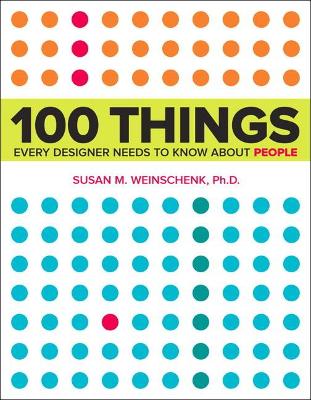Voices That Matter
2 total works
Every day around the world millions of presentations are given, with millions of decisions hanging in the balance as a result. Do you know the science behind giving a powerful and persuasive presentation? This book reveals what you need to know about how people listen, how people decide, and how people react so that you can learn to create more engaging presentations. No matter what your current skill level, whether beginner or polished, this book will guide you to the next level, teaching you how to improve your delivery, stance, eye contact, voice, materials, media, message, and call to action.
Learn to increase the effectiveness of your own presentations by finding the answers to questions like these:
Learn to increase the effectiveness of your own presentations by finding the answers to questions like these:
- What grabs and holds attention during a presentation?
- How do you choose the best media to use?
- What makes the content of a presentation stick?
- How do people react to your voice, posture, and gestures?
- How do people respond to the flow of your message?
- How do you motivate people to take action?
We design to elicit responses from people. We want them to buy something, read more, or take action of some kind. Designing without understanding what makes people act the way they do is like exploring a new city without a map: results will be haphazard, confusing, and inefficient. This book combines real science and research with practical examples to deliver a guide every designer needs. With it you’ll be able to design more intuitive and engaging work for print, websites, applications, and products that matches the way people think, work, and play.
Learn to increase the effectiveness, conversion rates, and usability of your own design projects by finding the answers to questions such as:
What grabs and holds attention on a page or screen?
What makes memories stick?
What is more important, peripheral or central vision?
How can you predict the types of errors that people will make?
What is the limit to someone’s social circle?
How do you motivate people to continue on to (the next step?
What line length for text is best?
Are some fonts better than others?
These are just a few of the questions that the book answers in its deep-dive exploration of what makes people tick.
Learn to increase the effectiveness, conversion rates, and usability of your own design projects by finding the answers to questions such as:
What grabs and holds attention on a page or screen?
What makes memories stick?
What is more important, peripheral or central vision?
How can you predict the types of errors that people will make?
What is the limit to someone’s social circle?
How do you motivate people to continue on to (the next step?
What line length for text is best?
Are some fonts better than others?
These are just a few of the questions that the book answers in its deep-dive exploration of what makes people tick.

